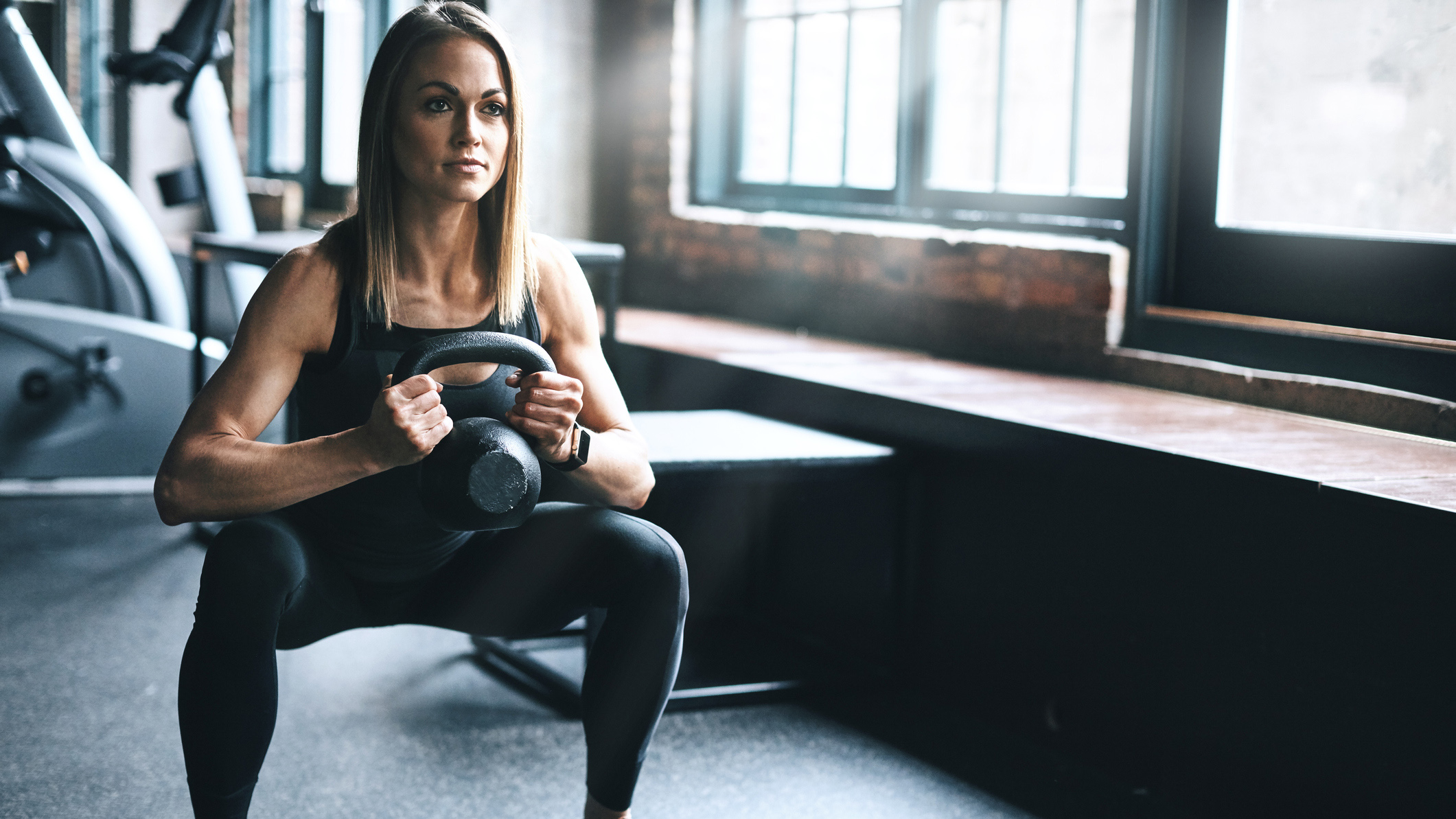My favourite ab workout is the goblet squat: here is why you should try this awesome compound exercise today
Start working on your six-pack and core muscles properly with goblet squats


If you want to have a six-pack, you must do ab workouts. This makes total sense: if you want to grow your quads, you won’t start doubling down on biceps curls. Knowing all this, you might be surprised to hear that my favourite ab exercise is actually a squat variation, the brilliant goblet squat.
Shocking, right? The goblet squat is a compound exercise that targets mainly the glutes and quads, but it also works a range of other muscles, including the biceps, forearms and abs.
Compound exercises such as the goblet squat, deadlift and bench press are your best friends to build muscle and overall strength fast as they work many muscles simultaneously. As a bonus, doing compound exercises instead of isolation movements (e.g. biceps curl) can help you trim down the length of your workouts too.
I have been doing goblet squats as part of my morning workout for a while now, and I’m telling you, they are the best. This dawn routine includes one push move (usually a push-up variation), one pull move (a pull-up or chin-up variation) and a leg exercise (e.g. goblet squat) to wake my body up and get me a little pumped before work. [wink wink]
The reason why I prefer doing goblet squats over – let’s say – dumbbell hamstring deadlifts is because of the added abs activation of the goblet squat. By holding the weight in front of your chest, you force your body to rely more on your core to balance the movement than if you just did standard squats. It also adds a bit more resistance to my squats and keeps my biceps and shoulders more engaged.
Truly the perfect exercise to get you ready for the day!
- I thought sumo deadlifts were stupid until I tried them, now I can't stop doing them on leg days
How to perform goblet squats
Start with standing with your feet hip-width apart (maybe a tad bit wider), your toes pointing forward. Hold the weight with both hands at the top of your chest as if it was a goblet; from 'underneath', so to say. Hold the weight close to the chest for better lower body activation but feel free to hold it further away from your chest to activate the forearms, biceps and core even more.
Get all the latest news, reviews, deals and buying guides on gorgeous tech, home and active products from the T3 experts
No need to go crazy, though. You shouldn't fully extend the arms in front of you; that's just silly. Holding the weight an inch or two away from the chest should do the trick.
Either way, keep your spine neutral and look straight ahead throughout the movement. Then, press your hips back and bend your knees to perform a nice, deep squat. Only go as deep as you comfortably can; you don't want to overexert your knees going too deep. Your shoulders and chest should be open and the core engaged.
Push yourself back up and return to the starting position. That's one repetition.
Feet are firmly placed and flat against the floor, similarly when you perform a barbell squat. Don't go up on your tiptoes at the bottom of the movement but if you feel strong enough holding the weight (and your core is adequately engaged), feel free to finish each rep with a calf raise. Yet another area the fabulous goblet squat can work!
It goes without saying, but you might want to distribute the weight evenly between the two legs and keep the dumbbell or kettlebell right in the middle of your centre of gravity. Use a mirror if needed but make sure you don't load either side of the body more than the other.
Goblet squats: what gear will you need
I would recommend using a simple cast iron kettlebell for goblet squats. I use the same kettlebell for goblet squats and kettlebell swings. As a matter of fact, I did the 10,000 kettlebell swing challenge using the 24 kg kettlebell and use the same weight for goblet squats.
You can also use a nice heavy dumbbell but it’s not very likely you will have a heavy enough dumbbell at home unless you have adjustable dumbbells in your home gym. I prefer to work out using barefoot workout shoes such as the Inov-8 BARE-XF 210 V3, but any shoes with a flat sole would do. Steer clear away from high-stack running shoes, though.

Matt Kollat is a journalist and content creator who works for T3.com and its magazine counterpart as an Active Editor. His areas of expertise include wearables, drones, fitness equipment, nutrition and outdoor gear. He joined T3 in 2019. His byline appears in several publications, including Techradar and Fit&Well, and more. Matt also collaborated with other content creators (e.g. Garage Gym Reviews) and judged many awards, such as the European Specialist Sports Nutrition Alliance's ESSNawards. When he isn't working out, running or cycling, you'll find him roaming the countryside and trying out new podcasting and content creation equipment.